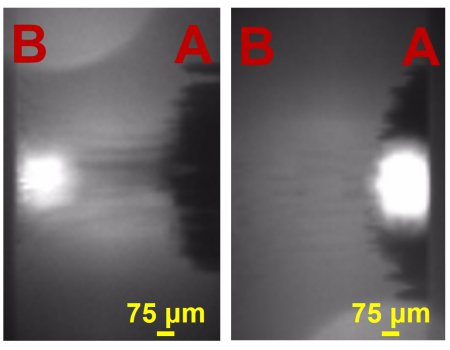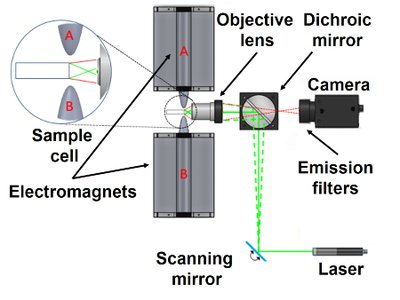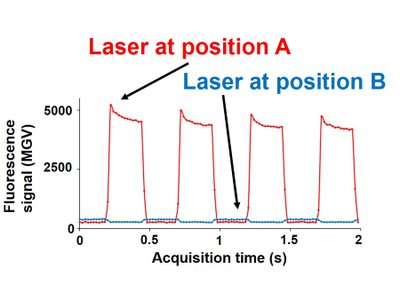OPTICAL MODULATION BIOSENSING (OMB) SYSTEM
 Detecting low concentrations of disease biomarkers enables early
diagnosis of the disease and consequently earlier treatment. Widely adopted sensing methods employ optical, mechanical, and electrochemical techniques. Specifically, optical sensing methods, based on electro-chemiluminescence, chemiluminescence, and fluorescence are the basis of many clinical diagnostic devices and provide ultra-high sensitivity and multiplexing capabilities. In fluorescence-based assays, usually a target molecule is captured using a probe conjugated to a capture surface and then detected using a second fluorescently labeled probe. One of the most common capture surfaces is a magnetic bead. Magnetic beads facilitate separation steps, are well suited for automation, and improve assays’ sensitivity.
Detecting low concentrations of disease biomarkers enables early
diagnosis of the disease and consequently earlier treatment. Widely adopted sensing methods employ optical, mechanical, and electrochemical techniques. Specifically, optical sensing methods, based on electro-chemiluminescence, chemiluminescence, and fluorescence are the basis of many clinical diagnostic devices and provide ultra-high sensitivity and multiplexing capabilities. In fluorescence-based assays, usually a target molecule is captured using a probe conjugated to a capture surface and then detected using a second fluorescently labeled probe. One of the most common capture surfaces is a magnetic bead. Magnetic beads facilitate separation steps, are well suited for automation, and improve assays’ sensitivity.
Previously, our lab developed a novel technology, termed magnetic modulation biosensing (MMB), that can rapidly detect very low concentrations of target analytes. To measure the number of target molecules that were captured by magnetic beads and labeled by fluorescent molecules, the MMB system aggregates the beads and manipulates them from side to side in an alternating magnetic field gradient at low frequency (1 Hz), in
and out of a laser beam. Every time the beads cross the laser beam, they generate a fluorescent signal, which is detected by a camera. The amplitude of the periodic fluorescent signal is directly proportional to the number of the target molecules in the sample. The movement of the beads relative to the laser beam eliminates the constant background noise from the solution, without the need for the laborious washing steps that are usually incorporated in other fluorescence-based assays, such as Bio-Plex Precision Pro or Enzyme-Linked Immunosorbent Assay (ELISA). Moreover, the aggregation of the magnetic beads from the entire sample volume into the detection area significantly increases the signal. Hence, MMB-assisted assays are characterized by high sensitivity and shorter and simpler testing protocols.
Therefore, we developed a new approach, termed optical modulation biosensing (OMB), that produces the relative movement between the magnetic beads and the laser beam by fixing the magnetic beads and modulating the laser beam. Modulating the laser beam is much faster than modulating the aggregated beads, and therefore the data acquisition time is significantly shorter (∼250ms). Using the OMB system to detect human Interleukin-8 (IL-8), we demonstrate a limit of detection of 0.02 ng/L and a 4-log dynamic range. This level of performance is comparable with that of the most sensitive devices but is achieved without their bulk and cost . We further demonstrated the clinical sensitivity and specificity of the OMB system by detecting anti-Zika virus (ZIKV) Immunoglobulin G (IgG) antibodies in serum samples from quantitative reversetranscriptase polymerase chain reaction (qRT-PCR) or neutralization Zika-positive patients and healthy individuals. The OMB-based Zika IgG serological assay showed 96% sensitivity and 100% specificity. The results are on par with the state-of-the-art EUROIMMUN ELISA
test.


Our paper on the optical modulation biosensing system was published at "Biomedical Optics Express". The paper, entitled: "Optical modulation biosensing system for rapid detection of biological targets at low concentrations", can be found in the Publications section, and at DOI:10.1364/BOE.430410.
